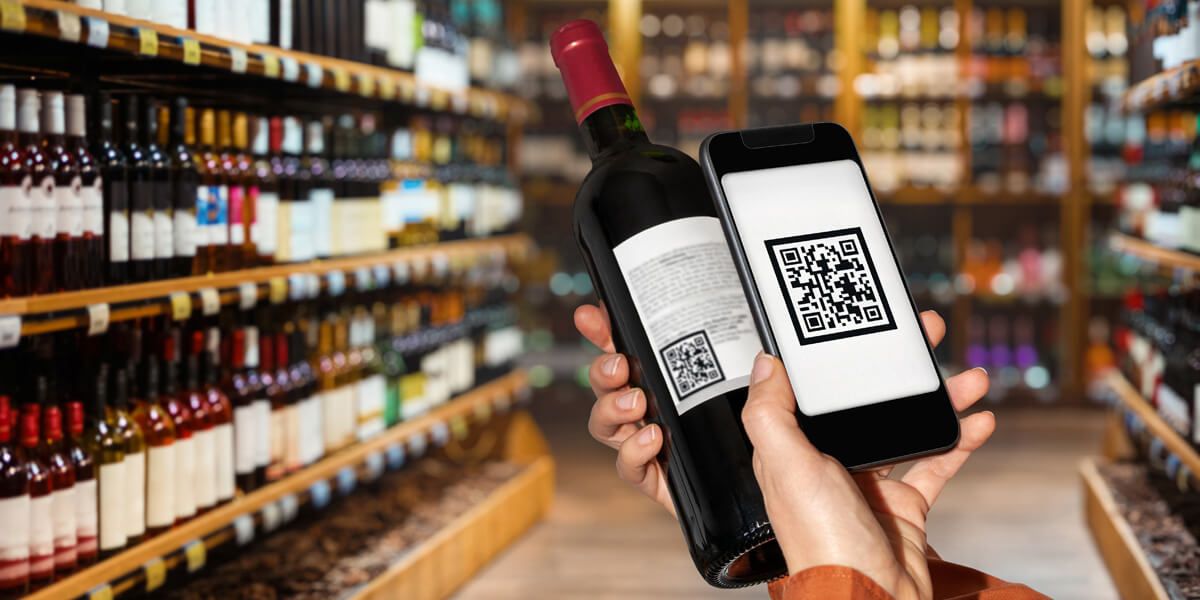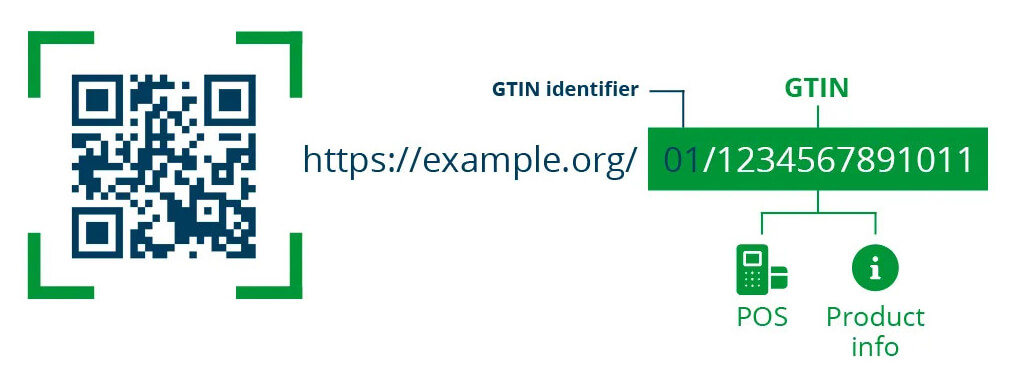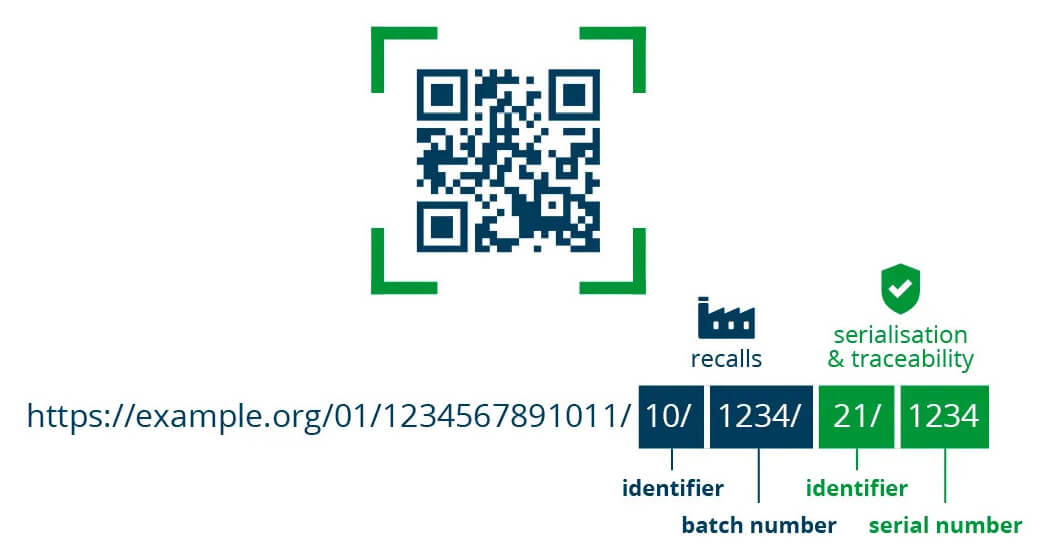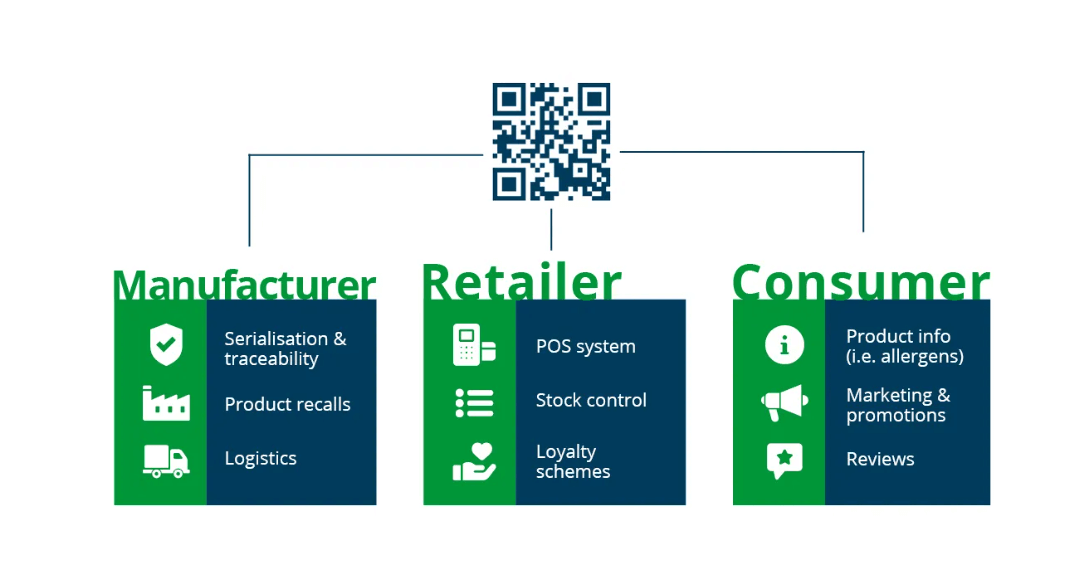
Christos Tegos
Theodorou Group Marketing
On June 26, 1974, history was made in retail with the scanning of the first barcode. Initially introduced as a method to facilitate supermarket checkouts by retrieving product prices, it later became a global standard in retail with specifications set by the international standards organization GS1.
Barcodes are still scanned over 6 billion times daily, but as the demand for more information grows, many industries are beginning to adopt two-dimensional codes for product packaging.
GS1 Digital Link: Catalyst for Digital Transformation
GS1 is preparing to transition from 1D barcodes to a new 2D code format – GS1 Digital Link. At the GS1 Global Forum held in Brussels in February 2023, the standards organization officially announced the shift to the era of 2D Codes, starting in 2027.

The GS1 Digital Link is a structured 2D code for encoding information in the form of QR codes. It can include the information from existing barcodes along with much more. The major innovation is that the GS1 Digital Link utilizes the internet through electronic addresses (URLs).
In recent years, several industries have responded to the growing demand for more data by adding an additional QR code to product packaging for consumer applications, along with additional data for POS, inventory control, or supply chain management.

GS1 has officially launched tools to assist industries in transitioning to a unified, data-rich 2D code compatible with everything from warehouse machinery and POS scanners to specialized applications and smart systems for retrieving product information.
A single GS1 Digital Link will provide different information depending on the device used for scanning the code, offering opportunities to enhance supply chain transparency, ensure product authenticity, and provide a wealth of information to consumers.
The GS1 Digital Link standard has been developed in collaboration with some of the largest retail and transportation logistics companies to enable information sharing, improve transparency, authenticity, and traceability of products, while also engaging consumers.

What Changes Will the Transition from 1D Barcodes to 2D Bring?
While the GS1 Digital Link standard offers a vision—and now a roadmap—for a future where a single, data-rich 2D code replaces the 1D barcode, there are certain challenges industries must consider.
Initially, industries need to determine which information to include in the code—whether variable data related to batches or more specialized information. Depending on these choices, access and data aggregation from ERP systems and production lines may be necessary.
Industries will also need to select the best solutions for printing QR codes and handling products and code verification. As with any product code, a GS1 Digital Link code can only be effective if printed correctly, ensuring it can be scanned and read accurately.
A 2D code contains variable data, such as batch information, nutritional information, allergens, expiration dates, and other product-specific attributes. Therefore, since the information is unique and dynamic, the 2D code cannot pre-exist on a pre-printed label; encoding occurs on the product during the production process with serialization systems.
Encoding products with complex codes in real-time on production lines presents its own challenges. Careful selection of printing technology, appropriate 2D code printers, and proper product handling are required.
A low-quality 2D code can lead to high rejection rates, reprocessing, and defective inventory. Poor-quality 2D codes can also negatively impact lines that require packaging products into bulk or palletized packs (aggregation process).
The Theodorou Group provides businesses with comprehensive solutions to prepare for the era of 2D codes. We have developed a range of solutions designed to handle data processing, high-quality 2D code printing, code verification systems, and facilitate data sharing, both within industrial production and across the supply chain.
What is the Timeline for Implementing GS1 Digital Link?
The official implementation date for GS1 Digital Link and the replacement of old-style codes is set for 2027.
There will, of course, be a transitional adjustment period. However, we are already seeing pioneering industries, retail businesses, and other supply chain companies not only adapting to the new requirements but also advancing innovative applications of GS1 Digital Link, aiming for competitive advantages.
One of the main challenges industries will face is agreeing on the content of this new GS1 Digital Link and ensuring their systems are adapted to handle new data requirements and effective printing. Industries seeking the optimal solution for transitioning to the new era will benefit greatly from partnering with an automation solutions provider with expertise and long-standing experience in product coding and traceability.
 Christos Tegos
Christos Tegos
Theodorou Group Marketing Manager


